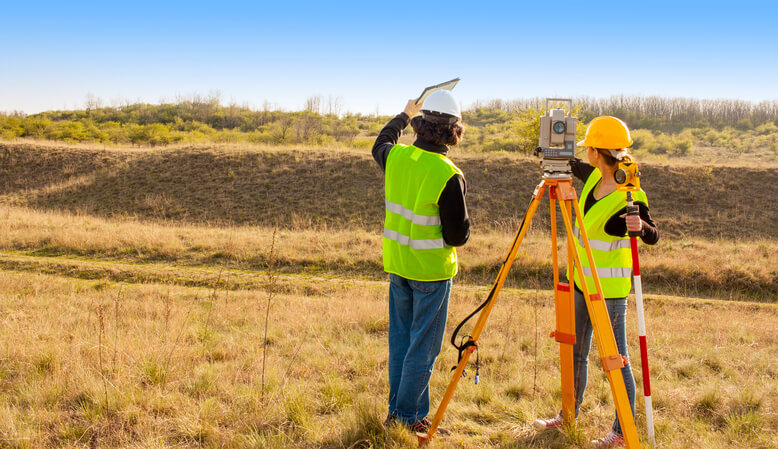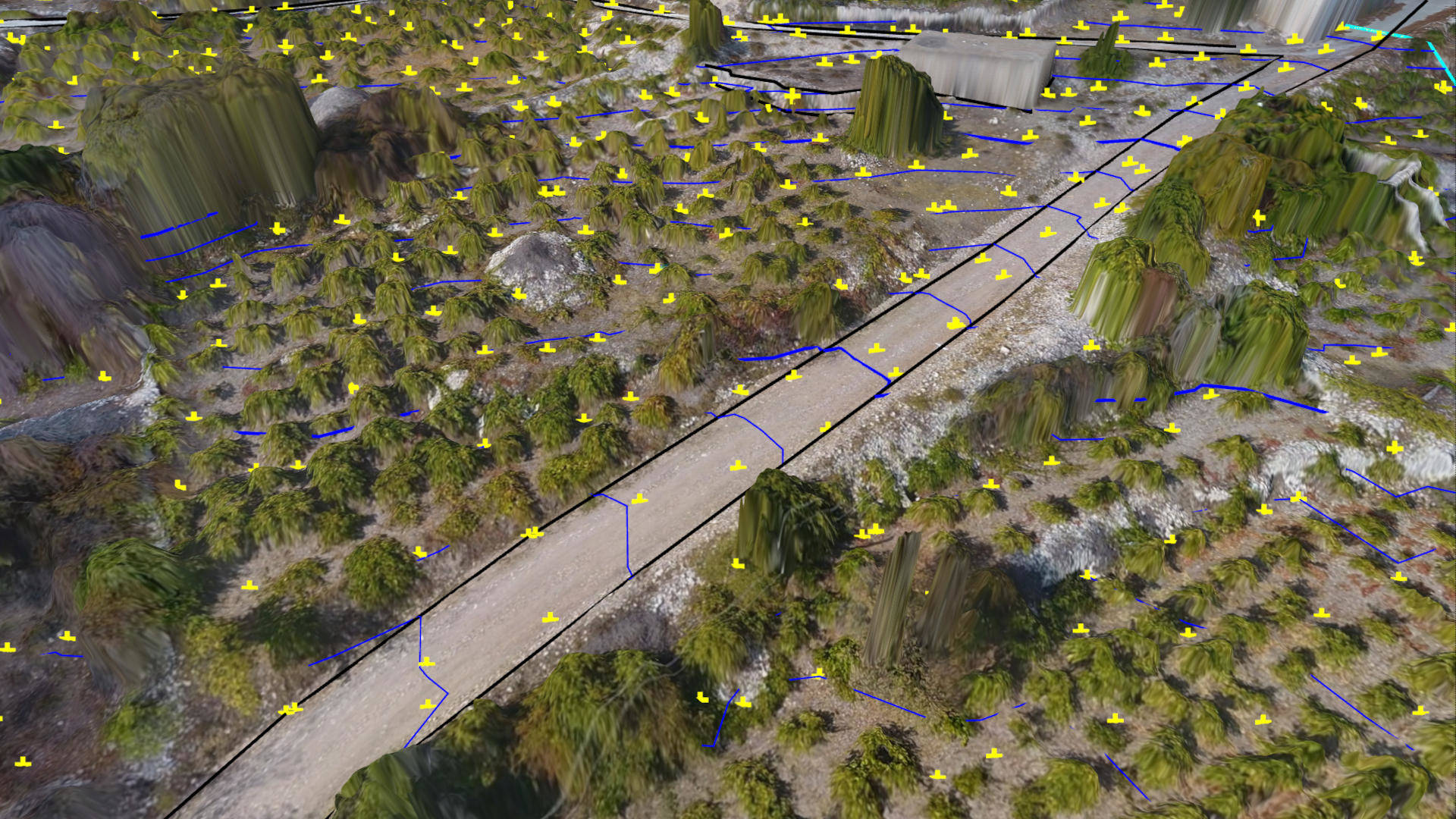Topographic Survey Solutions: Elevate Your Task with Accurate Data
Wiki Article
Charting the Training Course: Transforming Checking Solutions for Improved Environmental Conservation and Resource Management
Are you interested in the future of evaluating solutions and their influence on ecological preservation and source administration? Look no additionally. This post will take you on a journey of innovation and exploration, as we delve into the advancements in surveying modern technology and methods that are reinventing the field. full measured building survey. Discover just how incorporating Geographic Information Systems (GIS) and leveraging remote sensing methods are improving conservation efforts. Join us as we explore the important function of surveying experts in driving sustainable development and conservation.The Relevance of High-Quality Checking in Environmental Conservation
Premium surveying is important for effective ecological preservation and resource management. When it comes to protecting the setting and handling our precious sources, exact information is critical. With high-quality surveying, you can gather accurate details regarding the land, water bodies, and ecological communities, enabling you to make enlightened decisions and take ideal actions.By employing top quality surveying techniques, you can properly map out the terrain, recognize delicate areas, and evaluate the influence of human activities. This data is essential for establishing effective preservation strategies and applying sustainable source monitoring plans. With exact surveying, you can keep an eye on changes in the atmosphere with time, enabling you to track patterns, recognize potential dangers, and take timely procedures to minimize any negative results.

Developments in Evaluating Innovation for Source Administration
You can conveniently remain updated on the most recent developments in evaluating technology for much better source monitoring. As modern technology remains to advance, so does the field of checking. New techniques and tools are continuously being created to improve the accuracy and effectiveness of checking procedures, inevitably leading to more reliable source management.One of the vital innovations in surveying technology is the usage of drones. Drones outfitted with high-resolution electronic cameras and LiDAR sensing units can catch comprehensive imagery and gather data in a fraction of the time it would certainly take utilizing conventional surveying approaches.
An additional crucial development is using Geographic Info System (GIS) innovation (topographic survey). GIS allows surveyors to accumulate, assess, and imagine data in a spatial context. By incorporating information from different sources, such as satellite imagery, airborne photos, and ground surveys, GIS enables surveyors to develop in-depth maps and designs that can be made use of to make educated decisions regarding resource monitoring
Integrating Geographic Information Equipment (GIS) in Checking for Boosted Conservation Initiatives
By integrating Geographic Info Equipment (GIS) into your evaluating practices, you can substantially improve your preservation efforts. GIS enables you to collect, examine, and visualize spatial information, providing useful insights into the setting and sources. With GIS, you can precisely map and monitor environments, track changes in time, and recognize areas of high conservation worth.One of the key benefits of making use of GIS in surveying is the capability to make educated choices based on thorough data. By overlaying different layers of details, such as land usage, vegetation cover, and wildlife environments, you can identify areas that need prompt focus for preservation. This helps you prioritize your efforts and designate resources better.
GIS likewise allows you to collaborate and share information with various other stakeholders included in preservation initiatives. You can easily communicate your searchings for and recommendations to federal government agencies, non-profit companies, and regional areas, promoting a collective approach in the direction of environmental management.
In addition, GIS boosts the precision and effectiveness of evaluating tasks. By incorporating GPS innovation with GIS, you can properly situate and map features on the ground. This lowers human error and makes certain that your evaluating data is dependable and updated.
Leveraging Remote Sensing Methods for Ecological Monitoring and Surveying
Leveraging remote noticing methods boosts the effectiveness and accuracy of environmental monitoring and surveying. By using sophisticated satellite images, aerial digital photography, and other remote noticing innovations, you can collect important data concerning the Earth's surface area and its attributes without literally existing in the field. This enables you to cover huge areas quickly and cost-effectively, saving both time and resources.
With useful content remote picking up, you can obtain high-resolution pictures of the setting, allowing you to identify and keep an eye on adjustments in land cover, greenery wellness, and water bodies. This information is essential for evaluating the impact of human tasks on ecosystems and managing natural deposits properly - site engineering surveys. Furthermore, remote picking up strategies offer important insights into climate patterns, allowing you to analyze climate problems, monitor temperature level modifications, and anticipate all-natural disasters such as wildfires or hurricanes
In addition, remote sensing can be used to detect and monitor air pollution resources, track the spread of invasive varieties, and examine the high quality of air and water. By utilizing spooky analysis, you can recognize certain pollutants and their resources, helping to establish methods for air pollution control and prevention (topographical surveys). This modern technology also plays an important role in wildlife preservation, as it allows you to keep track of animal habitats, track migration patterns, and determine areas of high biodiversity
The Duty of Evaluating Specialists in Sustainable Advancement and Preservation
With remote sensing techniques, evaluating specialists play an essential duty in advertising sustainable development and preservation initiatives. As a checking professional, you are at the forefront of making use of innovative innovation to gather essential data concerning the atmosphere. Through aerial and satellite images, LiDAR, and various other remote noticing tools, you are able to collect exact and detailed details regarding land cover, vegetation, water sources, and other important all-natural functions.Your role is not restricted to information collection alone. You also play a vital function in analyzing and interpreting the collected information to offer beneficial insights for lasting advancement and preservation projects. By determining locations in danger of deterioration, you can aid in the preparation and execution of techniques to shield and restore these locations. In addition, your proficiency in evaluating strategies enables you to properly map out boundaries and demarcate secured locations, ensuring the effective management and preservation of natural deposits.
In cooperation with other specialists, such as environmental researchers and policymakers, you add to the formulation of lasting development strategies and conservation approaches. Your know-how helps in identifying possible problems in between advancement and preservation objectives, allowing stakeholders to make informed decisions that stabilize economic development with ecological protection.
Overall, as an evaluating specialist, you have a vital duty in promoting lasting development and preservation initiatives. land surveying london. Your abilities in remote picking up and data evaluation are crucial in providing the necessary info and insights for effective ecological management and preservation
Verdict

Are you interested in the future of evaluating services and their influence on ecological conservation and source management? Furthermore, accurate checking data aids in the recognition of environmentally sensitive locations, enabling for the facility of protected areas and the implementation of proper preservation procedures.
Furthermore, your expertise in checking techniques enables you to precisely map out limits and demarcate protected locations, ensuring the efficient management and conservation of all-natural resources.
In verdict, surveying services play a vital role in enhancing ecological conservation and resource monitoring. By utilizing innovative modern technologies such as geographical details systems (GIS) and remote noticing methods, evaluating experts can properly collect data to sustain conservation initiatives.
Report this wiki page